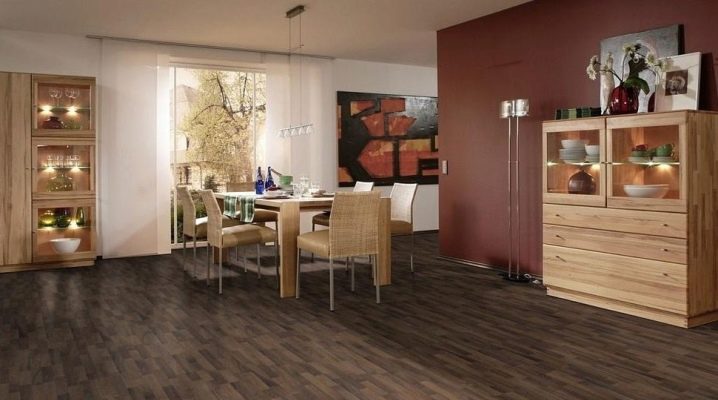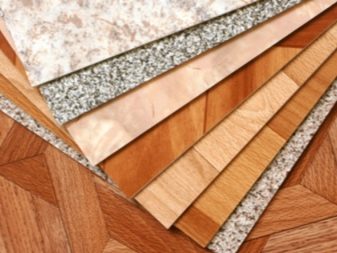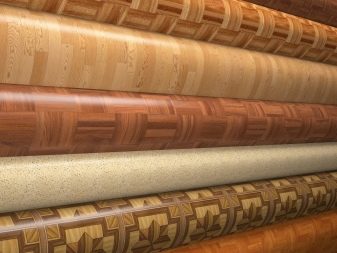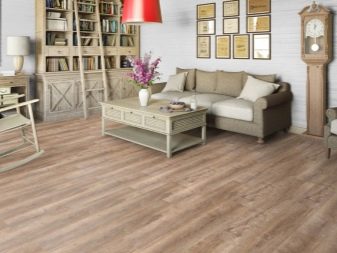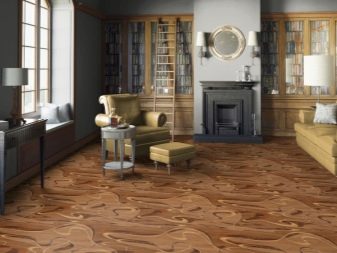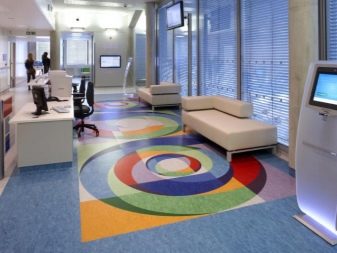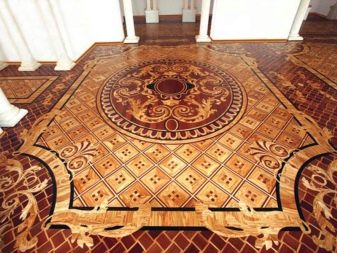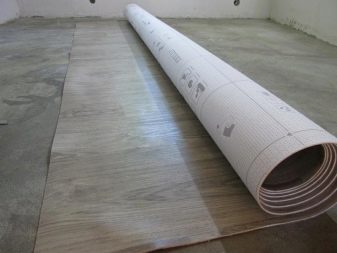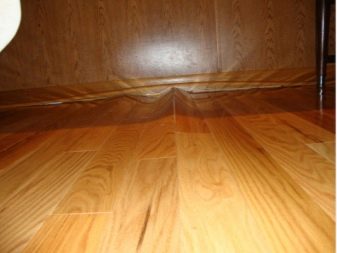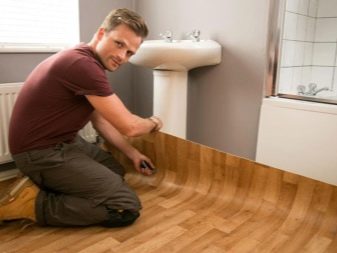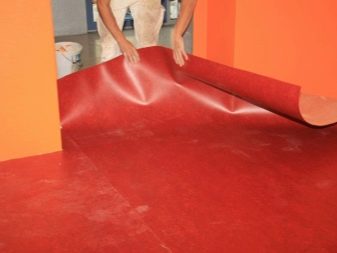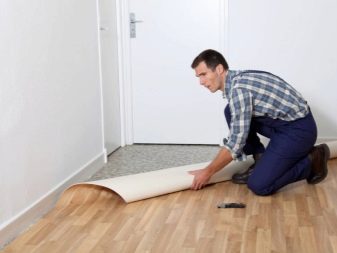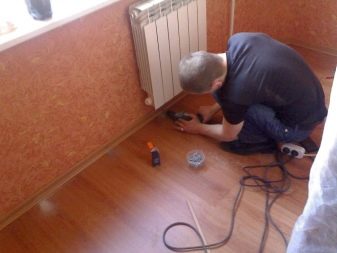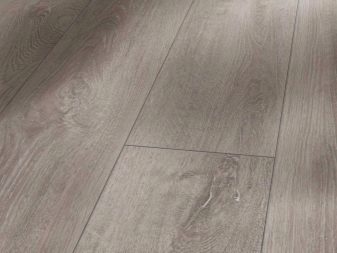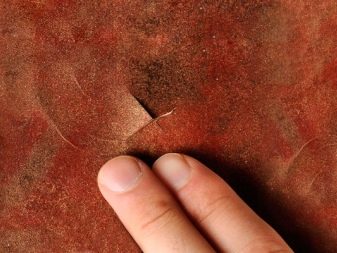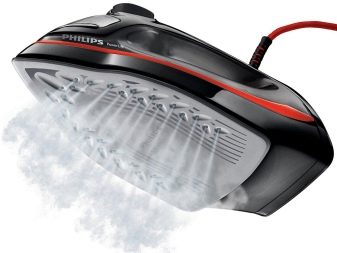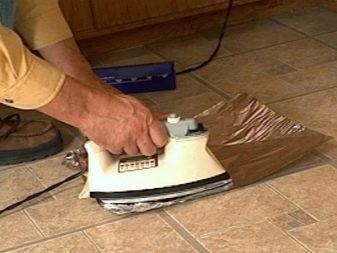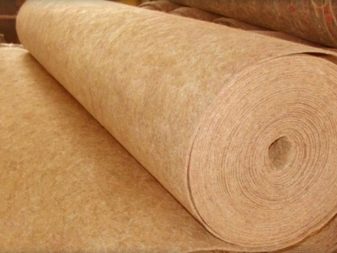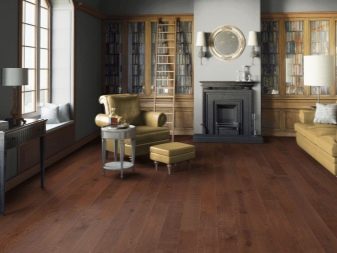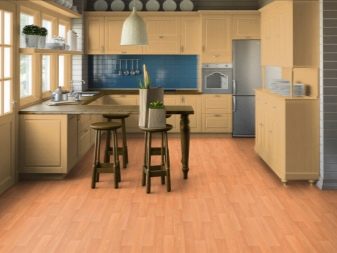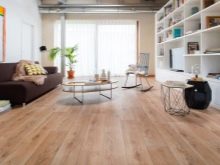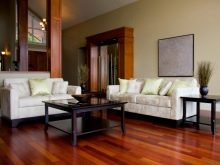How to smooth the linoleum on the floor?
Linoleum - flooring, which is very popular. Being in rolls or under improperly moved furniture, this material is jammed, which is reflected in the appearance of the floor covering. Few people know that solving this problem is not as difficult as it seems at first glance.
Material Features
This flooring is a polymeric material. It is sold in rolls, which is convenient for transportation. The width of the canvas is variable and allows you to cover the floor in most residential premises without joints. Linoleum belongs to the budget types of flooring and consists of several layers, including protective and warming.
Linoleum has several advantages:
- The material is easy to care, resistant to scratches, moisture and deformation.It does not accumulate dust and does not attract pollution. To keep the surface clean it is enough to wash the linoleum twice a week.
- Laying this flooring can be done independently, without the involvement of specialists. It is simple and does not require in-depth study of all the subtleties.
- On the surface of linoleum there are no traces of the feet, as is the case with cheap laminate samples.
- Laying this material on the floor, you create a sound-proof layer, eliminating the annoying background noise. This is especially important in buildings of the last century, where the overlap is quite thin.
- The life of linoleum is long enough, it depends on the type of coating and can reach 10 years or more.
- Linoleum is characterized by a wide range of varieties for any customer preferences. It can imitate expensive types of finishes (tile, parquet), be bright, solid or have fantasy patterns.
In addition to the advantages of linoleum, there is a drawback: the artificial material does not have breathability. However, today trademarks began to introduce into production analogs from natural fibers.
Causes of defects
Despite the high quality and practical characteristics, it is not always when installing a perfectly smooth surface.
This is due to some factors:
- Buying this coverage of the required volume, we often try to save on delivery by putting the roll into a passenger car and bending it. Having unfolded the flooring of the house, a defect is found at the bend. This causes the linoleum not to lie flat on the floor and form waves.
- Linoleum can form bends during prolonged storage. Factory production involves winding cloths on rolls, the width of which can reach 6 m, and the length is more than 50 m. Lying in a roll, it “remembers” the form, therefore, it needs some time to align.
- Free placement on the floor without gluing with simultaneous inaccurate rearrangement of furniture leads to jamming of the canvases. If you do not immediately notice the hall, the wave may eventually become more pronounced.
- Waves and bubbles on linoleum may appear much later than styling. This defect is often associated with a violation of the technology of flooring. It requires urgent removal, otherwise it will accelerate the wear of linoleum and may cause damage to the surface of the coating.
The reason for the formation of waves can be an excess of material: often when laid down, the material is cut close to the walls in the hope that after some time the linoleum will shrink.
In fact, the coating is made of materials that are predominantly not deformed and do not shrink. Therefore, this approach is devoid of foundation, and it is quite possible to add problems.
How to align?
There are several ways to eliminate the irregularities of linoleum:
- If the material is just purchased, spread the sheet face up and leave it to lie on a flat floor for a couple of days: all the irregularities that were on this floor covering will disappear.
- If it was not possible to smooth it out, a press should be applied. To do this, they place something heavy on the places of bend (for example, stacks of books, cans of water). Often, linoleum is first covered with a sheet of plywood, and then it becomes heavier.
- Often, people do not have time to wait until the linoleum straightens, so the sheet can be tightly twisted into a roll (face out). In this case, it is important not to lose time, otherwise the waves will appear in the opposite direction. The term of a linoleum in a dense roll makes no more than a day.
Repair teams do not give the linoleum time to straighten, engaging in its alignment at the laying stage. For this, one side of the floor covering is fixed with baseboard. Then, using a long smooth board, level the surface from dents and stretch the sheet, fixing it with something heavy (for example, a bag with a rover for walls). At the last stage, the canvas is fixed from the opposite side, and then from the two remaining ones.
During the operation of the flooring in the room, there may be a drop in temperature and humidity, with the result that linoleum can sit down or increase its size.
Therefore, it is necessary to leave a gap under the plinth. In addition, if the coating is old, leveling it bude hardest. This can only help the effects of high temperatures that can be created, for example, using a hair dryer.
If the waves on the floor covering appeared after the installation, it is unlikely that the situation could be corrected without intentional damage to the surface.
In this case, to eliminate them, you should use the following technology:
- take a thin needle or an awl and gently pierce the place where the bubble was formed;
- press down the bulge with your hand until the air cushion disappears completely;
- put glue into the syringe to fix the linoleum on the floor;
- insert glue into the hole of the needle and squeeze out some content;
- quickly align the linoleum in place of the bubble with a roller (you need to align the puncture site and the surface of the coating where there was no swelling).
This method is good if the bubble is large enough. If the wave is not very pronounced, it is better to remove the defect by heating. For this, it is initially important to make sure that there is a gap between the linoleum and the wall under the baseboard. If it is absent, at first the cloth is cut a little, and only after that they start to warm up, which allows to straighten the linoleum from the formed dents pressed by the furniture.
Can I use the iron?
The question of using an iron to get rid of floor irregularities is controversial. However, there is a technology that allows you to straighten the surface of the canvas with the help of this device. Do not forget that the hot iron platform is capable of melting the surface of linoleum in contact.
In order not to damage the texture, between the iron and linoleum it is worth putting paper or fabric.
The main requirement of the procedure is uniform heating of the entire wave. If you are smoothing linoleum through a fabric, it will not be superfluous to turn on the steam function on the iron. With this method, you need to be extremely careful: the size of the canvas can change, but the wave will not go anywhere. The surface of the linoleum of some samples after heating does not shrink, so the roughness may become even more noticeable.
Use of the iron is better to test on the cut off residue of the coating, if any.
What is put under linoleum?
Often bubbles and waves in linoleum are formed because of the uneven floor itself, which was not leveled before laying the floor covering. The easiest way to avoid this is to use a special substrate. It is sold in any hardware store and is most often used when laying laminate.
The material is a non-woven fabric of small thickness. This coating will help eliminate floor irregularities and provide additional sound and thermal insulation in the apartment. For laying in this way linoleum is required first to clean the floor from debris and dirt.Then lay the substrate, and only then lay a sheet of linoleum and straighten it.
Examples and options
In the market of building materials you can find a huge selection of linoleum from different manufacturers. Companies offer options for different styles of premises.
Here are some original samples:
- Tarkett Magia Viva Delhi. This flooring of the most famous manufacturer imitates reptile skin. It belongs to the semi-commercial type, designed for laying in rooms with medium traffic, ideal for a living room or kitchen, decorated in a modern style. The cost of such a sample is 621 rubles per square meter.
- Tarkett Discovery Batik. Another sample of linoleum is known brand, which mimics the floorboard of ash ash very light tone. The gray tint is a rather interesting solution, it looks good on the floor in the rooms of modern style. The class of this linoleum is 31, which corresponds to the semi-commercial type. The sample cost is 621 rubles per square meter.
- Eclectic Shalimar 578. This linoleum imitates tile coating. The colors combine cool blue and warm beige shades.This budget cover is ideal for decorating the kitchen floor in a temporary dwelling, as well as laying in the bathroom. The sample cost is 378 rubles per square meter.
- IVC Greenline Chokolat. Another sample of linoleum under the tile. It refers to the semi-commercial type, suitable for residential premises and offices, where there is a large influx of people. The combination of dark brown color and floral patterns makes the flooring aesthetic. It fits to the interior, decorated in classic and modern styles. The sample cost is 700 rubles per square meter.
How to smooth linoleum - the next video.
